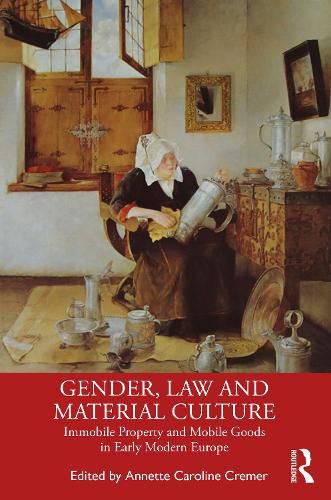Readings Newsletter
Become a Readings Member to make your shopping experience even easier.
Sign in or sign up for free!
You’re not far away from qualifying for FREE standard shipping within Australia
You’ve qualified for FREE standard shipping within Australia
The cart is loading…






This interdisciplinary volume discusses the division of the early modern material world into the important legal, economic, and personal categories of mobile and immobile property, possession, and the rights to usufruct.
The chapters describe and compare different modes of acquisition and intergenerational transfer via law and custom. The varying perspectives, including cultural history, legal history, social and economic history, philosophy, and law, allow for a more nuanced understanding of the links between the movability of an object and the gender of the person who owned, possessed, or used it. Case studies and examples come from a wide geographical range, including Norway, England, Scotland, the Holy Roman Empire, Italy, Tyrol, the Ottoman Empire, Greece, Romania, and the European colonies in Brazil and Jamaica. By covering both urban and rural areas and exploring all social groups, from ruling elites to the lower strata of society, the chapters offer fresh insight into the division of mobile and immobile property that socially and economically posed disadvantages for women.
By exploring a broad scope of topics, including landownership, marriage contracts, slaveholding, and the dowry, this book is an essential resource for both researchers and students of women’s history, social and economic history, and material culture.
$9.00 standard shipping within Australia
FREE standard shipping within Australia for orders over $100.00
Express & International shipping calculated at checkout
This interdisciplinary volume discusses the division of the early modern material world into the important legal, economic, and personal categories of mobile and immobile property, possession, and the rights to usufruct.
The chapters describe and compare different modes of acquisition and intergenerational transfer via law and custom. The varying perspectives, including cultural history, legal history, social and economic history, philosophy, and law, allow for a more nuanced understanding of the links between the movability of an object and the gender of the person who owned, possessed, or used it. Case studies and examples come from a wide geographical range, including Norway, England, Scotland, the Holy Roman Empire, Italy, Tyrol, the Ottoman Empire, Greece, Romania, and the European colonies in Brazil and Jamaica. By covering both urban and rural areas and exploring all social groups, from ruling elites to the lower strata of society, the chapters offer fresh insight into the division of mobile and immobile property that socially and economically posed disadvantages for women.
By exploring a broad scope of topics, including landownership, marriage contracts, slaveholding, and the dowry, this book is an essential resource for both researchers and students of women’s history, social and economic history, and material culture.